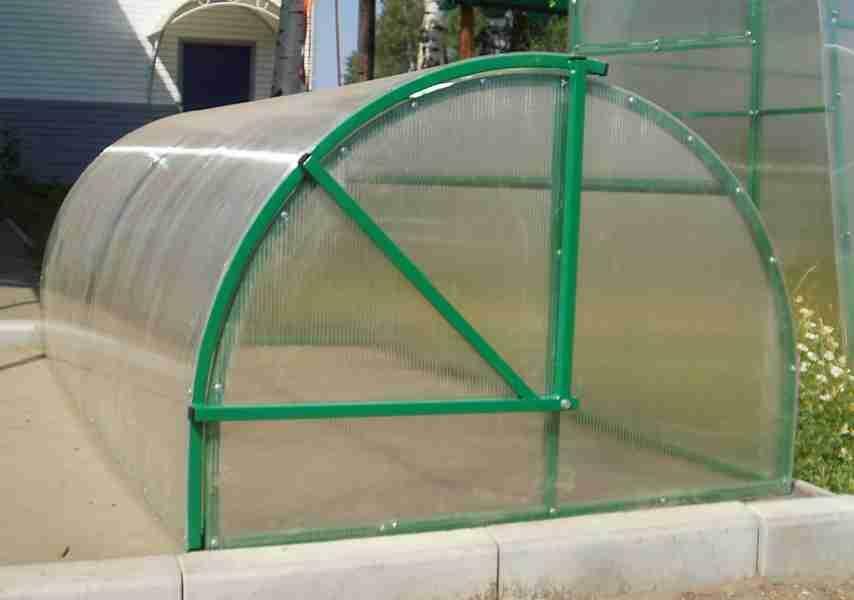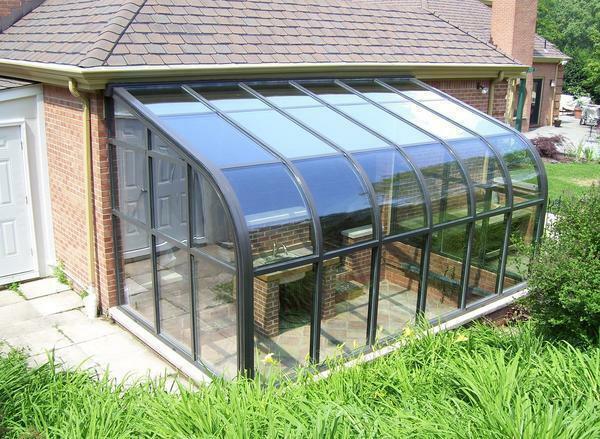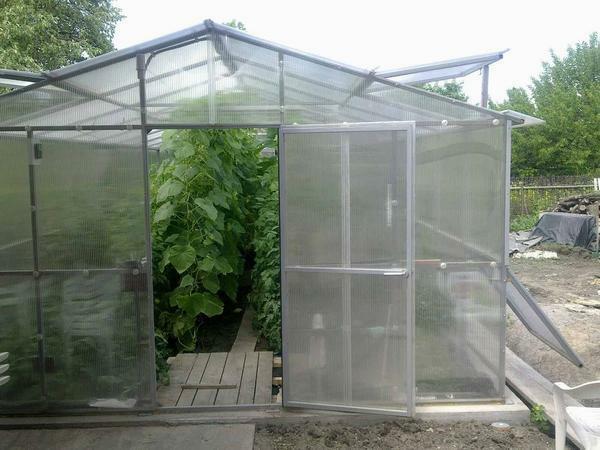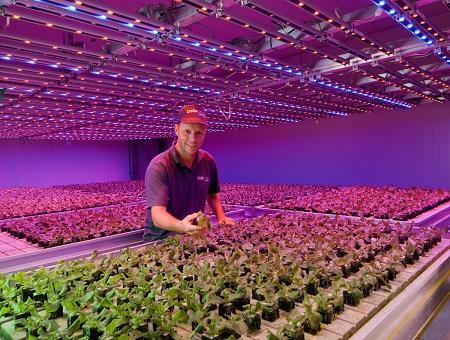 There is a wide variety of lamps for greenhouses that differ in design, size and purpose. Plants need air, water and light. In the autumn-winter period, the day becomes shorter and the amount of light becomes much smaller. From this, plants can not grow and develop properly, so it is important to provide their greenhouse constructions with lamps for artificial light. Also, the lamps can be heating, used to heat the greenhouse in winter.
There is a wide variety of lamps for greenhouses that differ in design, size and purpose. Plants need air, water and light. In the autumn-winter period, the day becomes shorter and the amount of light becomes much smaller. From this, plants can not grow and develop properly, so it is important to provide their greenhouse constructions with lamps for artificial light. Also, the lamps can be heating, used to heat the greenhouse in winter.
-
- Lamp for the greenhouse which to choose: basic types of lighting devices
- Plant fluorescent lamps in the greenhouse: the main characteristics
- Infrared lamps for heating greenhouses
- LED bulbs for greenhouses: what is their advantage
- How to calculate: bulbs for greenhouses
- Types of bulbs for greenhouses( video)
Lamps for greenhouses, which to choose: basic types of lighting devices
For correct growingThey should be illuminated up to 16 hours a day. From lack of light, plants die, but constant illumination harms them. The ideal time for a night's sleep is 6 hours, at which time the plants should rest from the light.
To date, there is no lamp that could completely recreate the light of the sun.
 Before buying a lamp for a greenhouse it is worth consulting with professionals
Before buying a lamp for a greenhouse it is worth consulting with professionals
While the plants are blooming and tied, you need to use lamps with red light waves of 500-700 nanometers, a blue color with a wave of up to 400 nanometers will suit the maturation period.
Types of lamps:
- Incandescent is the cheapest kind of lighting. In addition to light, this kind of lamp slightly warms the greenhouse.
- Mercury - emits powerful ultraviolet waves, which are not always useful for plants. Among other things, mercury lamps are dangerous to use. If you break such a lamp, you can ruin the whole harvest.
- Sodium is safer than mercury lamps. Their light is very similar to that of the sun, but they give little blue light, which is necessary for plants.
- Metal-halide ( MGL) - have a useful ultraviolet radiation, similar to sunlight. Lamps are heated quickly and have a short life. When the water hits, the lamps explode.
- Xenon - the use of these lamps in greenhouses gives an excellent result - grown vegetables are difficult to distinguish from vegetables grown in a natural environment. Professional lamps are used only in industrial greenhouses, at home it is impossible to use.
- Fluorescent - fluorescent tubes. The most common lamps for installation in greenhouses.
- LED - LED-lamps combine the characteristics of fluorescent and sodium lamps. Today it is an ideal lamp for lighting up.
In addition to the main types, we can distinguish induction, quartz lamps for lighting greenhouses and greenhouses. Very popular is the ultraviolet lamp used to fight microbes and other pests.
Fluorescent lamps for plants in the greenhouse: the main characteristics of the
Fluorescent lamps are used quite often to illuminate greenhouses. Previously, these lamps were considered the best option for installation in greenhouse structures.
When selecting lamps, you need to consider the spectrum of the glow - cold or warm white light, and their combination.
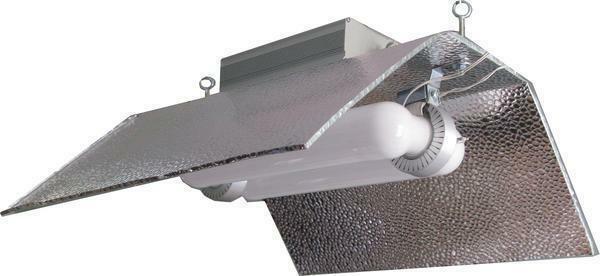 Among the advantages of fluorescent lamps is the long service life and relatively low price.
Among the advantages of fluorescent lamps is the long service life and relatively low price.
Cold white light is considered universal, it is used mainly for background lighting. Warm white light contains red rays and is used in greenhouses and greenhouses. Plants under the fluorescent lamp of the combined spectrum receive an equal amount of red and yellow rays, which have a beneficial effect on the growth of seedlings.
They are pleased with the advantages:
- Low price;
- Long service life;
- Do not heat up;
- Bright light;
- Virtually does not emit ultraviolet and infrared rays;
- You can install the lamp yourself.
The disadvantages are the low light output and the large size of the lamps, which can close natural sunlight during installation. Fixtures mount at a distance of not more than 0.5 meters from plants. For plants that love light, the optimal height is up to 15 cm.
Infrared lamps for heating greenhouses
For heating winter greenhouses infrared heaters are often used, but quite often farmers are confused by the high price. Recently, there has been a tendency to increase the demand for infrared lamps as heating for small greenhouses or in hotbeds where heating is problematic. Thermal IR lamps emit a small amount of power, which is enough to heat a small room.
Infrared lamps have the same radiation as the sun, but without ultraviolet.
 Thanks to infrared lamps, it is possible to heat both small and large greenhouses
Thanks to infrared lamps, it is possible to heat both small and large greenhouses
The power of the IR lamp is small, so when installing in a greenhouse, you need to consider this fact and place them at a distance of 150 cm from each other. Lamps heat up fairly quickly and heat the room well. They are very small and light, so they can be compactly placed in the greenhouse, without disrupting the overall design.
Advantages of infrared lamps for heating:
- IR lamps when working heat the soil and the plants themselves, they give off some of the heat to the air around - everything in the greenhouse warms up evenly;
- IR lamps and heaters can be connected to thermostats that will signal when the air temperature drops below the optimum temperature;
- IR heating systems spend 50-60% less electricity than electric heating;
- Fast warm-up of air;
- Cures for IR lamps do not harm people and plants;
- Heating IR lamps do not overdry the air, so the greenhouse does not need additional moisture;
- Lamps can be installed locally for each plant species.
Infrared lamps are screwed into the cartridge, while it is desirable that it is ceramic. From a strong temperature, the plastic cartridge will melt. When working, do not touch the IR bulb - you can get a burn.
LED bulbs for greenhouses: what is their advantage
Lighting is very important for the growth and fruitfulness of plants. Therefore, when choosing and calculating the amount of lighting, one should not be too lazy and give serious attention to this issue.
Most experts believe that the best option will be to install LED( light) phytolamps.
 LED lamps can significantly improve the growth of plants in the greenhouse
LED lamps can significantly improve the growth of plants in the greenhouse
Phytolamps, in addition to stimulating the growth of seedlings, do not require high power consumption. In such lamps special phyto-diodes are installed, which possess only useful spectra of light radiation. The combination of red, blue, green and white light, which emits an LED lamp, stimulates the growth of any type of plant. Light output from the LED lamp is less than, for example, gas discharge, but this in this case does not matter. This is due to the fact that the amount of light consumed, useful for plants, the LED is higher than that of any other.
One can not lose sight of the fact that LED lamps have a very long life without loss of performance. On average, the lamp is used no more than 16 hours a day, and its service life is 50,000 hours. Provided that the lamp is used in compliance with the operating conditions.
Among other things, energy-saving LED lamps do not radiate heat, which means that they can be placed in close proximity to plants and not be afraid that sensitive leaves will burn. The recommended distance is 25-35 centimeters. The only drawback of these lamps is their high price. However, given the fact that the lifetime of lamps reaches 11 years, then investing money in LED lamps is completely justified.
How to calculate: bulbs for greenhouses
In order to correctly calculate how much light you need in the greenhouse, you need to consider some parameters.
 When choosing a bulb for a greenhouse, it is worth considering the area and type of grown plants
When choosing a bulb for a greenhouse, it is worth considering the area and type of grown plants
It is necessary to take into account:
- Area of the illuminated area;
- Height at which the lamp is located;
- Lamp type and power;
- Plant type;
- Seasonality.
According to agronomic standards, the illumination level must be at least 7 kL( kilo) and not more than 20.
Based on these indicators, the number of luminaires can be calculated using an online calculator.
For additional energy saving and economical use of light rays, you can use reflectors. These are the reflectors used for better concentration of light and to minimize its dispersion. It should be taken into account, if the lamp is not gas or LED, then the concentration of light can burn the plants.
Types of bulbs for greenhouses( video)
Plants grown on the street derive strength and energy from the ground and from the sun, in the greenhouse conditions, when they do not have enough sun, special lamps come to the rescue. Thanks to the correct choice of a light bulb, it is possible to create conditions for plants that will almost completely mimic natural conditions.
